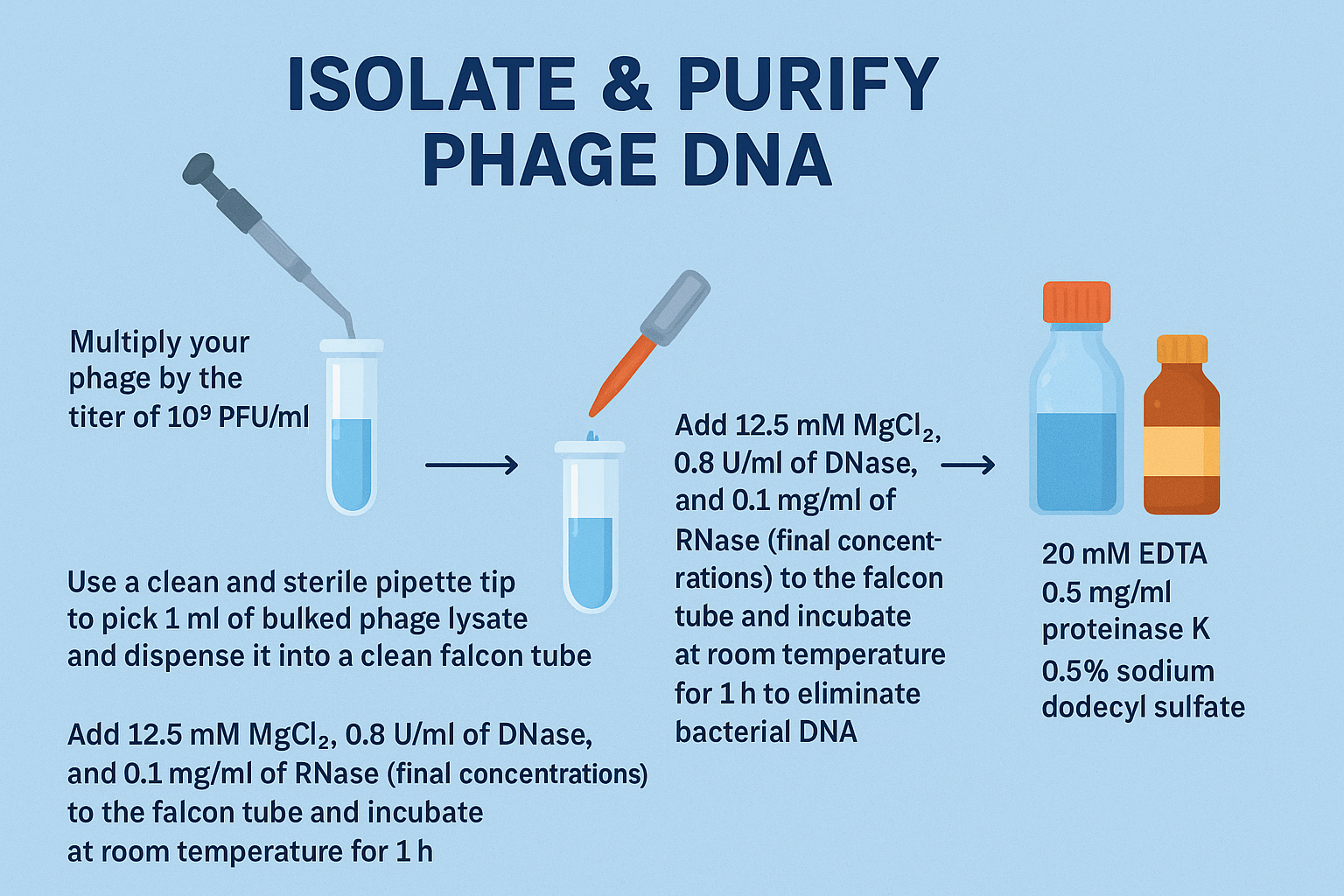Procedure
- Prior to the procedure, a stock culture of the phage target bacteria should be maintained on any general media preferably Trypticasein soy agar(TSA), Nutrient Agar, or Luria agar (LA) plate ( The cell wall composition is one of the most important factors providing attachment sites for phages. For example, phages-teichoic acids attach to the outer surface of the wall which is like a landing pad for viruses that infect bacteria. The selection of media for each bacterial species should be considered carefully before starting the protocol of training phages for enhanced properties, as these play a major role by providing optimum nutrient and growth environments for the target host to create a suitable phage-host interaction).
-
Inoculate 1 loopful of the bacteria into a 100 ml Erlenmeyer flask containing 10 ml of LB (supplemented with 10 mmol l-1 CaCl2.2H2O) at pH 7.2 ( The basic requirement of all phage culture media is that these should include the source of energy, the source of carbon, and the source of trace and major elements. The pH, growth temperature, and oxygen tensions are furtherrequirements that should be considered to suit the needs and limits of the desired phage amplification. For many phages, the optimum pH range is 6.5–7.5 and the optimum growth temperature is about 25–37 °C).
- Incubate for 18 h at 37 °C in an orbital shaker [200 revolutions per minute (rev min-1)].
- One ml serial dilutions prepare in LB (supplemented with 10 mmol l-1 CaCl2.2H2O).
- The cell concentrations used in this study are estimated as 101, 102, 103, 104, 105, 106, and 107 colony-forming units per milliliter (CFU ml-1)

Leave a Reply
You must be logged in to post a comment.